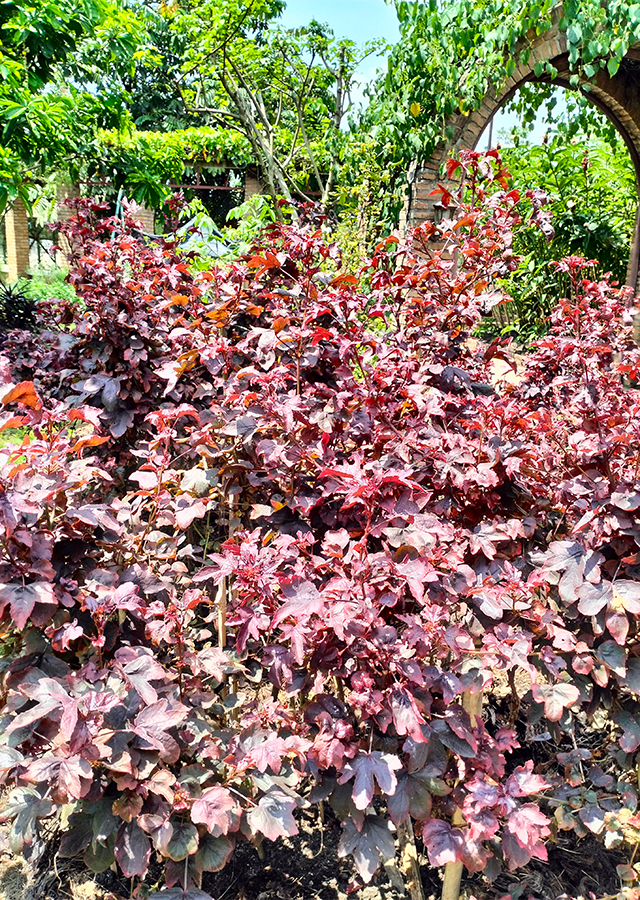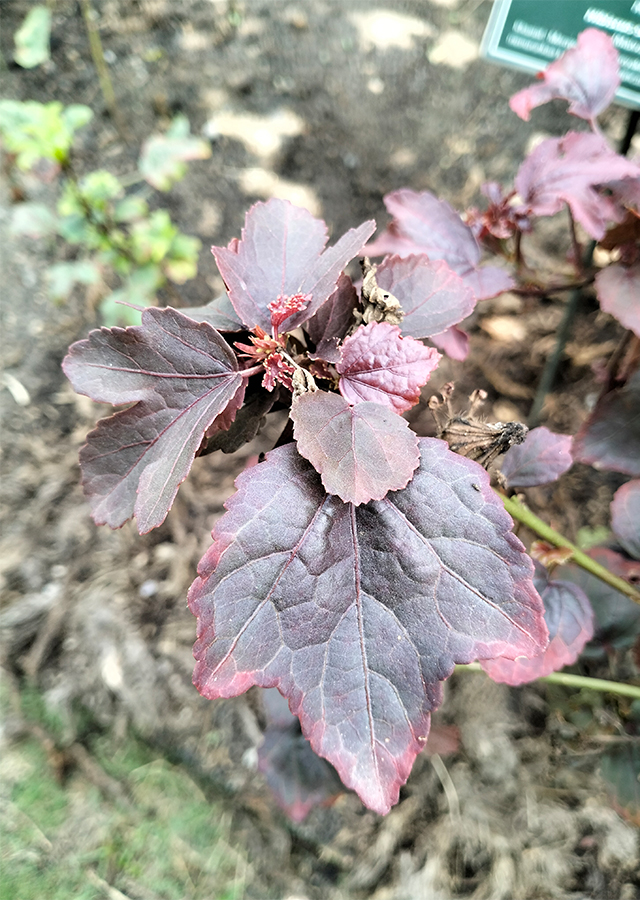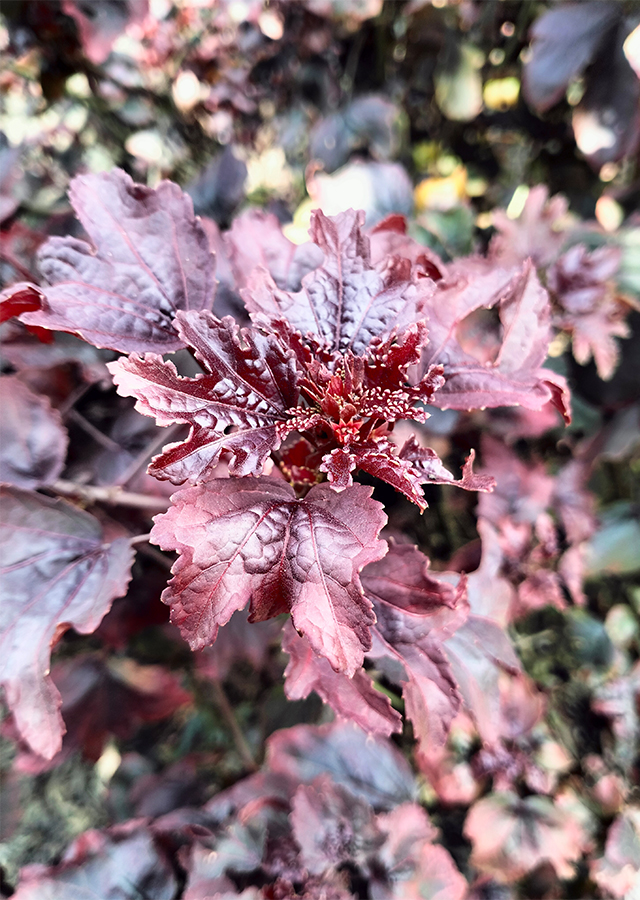False Roselle
Hibiscus acetosella Welw. ex Hiern
Malvaceae
Location in our garden
Principal



Synonym
Hibiscus eetveldeanus De Wild. & T.Durand
Habitus
Shrubs. An annual to a perennial plant that can grow 0.5-2.5 m tall
Part Used
Leaves
Growing Requirements
Full Sunshine
Need Shade
Habitat
Forest
Shrublands
Terrestrial
Overview
Hibiscus acetosella, its native range is Burundi to South Tropical Africa. It is has environmental uses, as a medicine and for food. The plant is grown in home gardens as a food crop in parts of Africa, particularly west Africa, and is also grown in South America and South-East Asia. It is cultivated as an ornamental from the temperate zone (where it is grown as an annual) to tropical areas. Leaves - raw or cooked, with an acid flavour with a mucilaginous texture, they can be added to salads or used in soups, stews etc. The red flowers and possibly also the leaves are occasionally used to make a tea, somewhat similar to the use of the red calyces of Hibiscus sabdariffa. Root is edible but is very fibrous, mucilaginous, without very much flavour.
Vernacular Names
Fausse roselle (French), Azedas (Polish).
Agroecology
Found over a large area of tropical Africa, usually being grown at low to moderate elevations. It can also be grown as an annual in warm temperate areas. It grows best in areas with good rainfall. Succeeds in a sunny position, but prefers some shade. Prefers a well-drained humus rich fertile soil. Plants are resistant to root-knot nematodes.
Morphology
- Root - fibrous root.
- Stem - glabrous to sparsely pubescent.
- Leaves - alternate, simple; stipules very narrowly lanceolate to linear, up to 1.5 cm long; petiole 3–11 cm long; blade shallowly to deeply palmately 3–5-lobed but upper leaves sometimes undivided, up to 10 cm × 10 cm, margin crenate, glabrous or sparsely pubescent, palmately veined, with a distinct nectary at base of midrib.
- Flowers - solitary in leaf axils, bisexual, regular, 5-merous; pedicel up to 1 cm long, articulate; epicalyx segments 8–10, bifurcate at apex, one fork lanceolate and spoon-shaped, the other linear, both c. 3 mm long; calyx campanulate, up to 2.5 cm long, lobes nearly glabrous; petals free, obovate, up to 5.5 cm × 3.5 cm, lemon-yellow with red-purple base or wine-red; stamens numerous, united into a column up to 2 cm long, red-purple; ovary superior, 5-celled, style with 5 branches.
- Fruit - red ovoid capsule up to 2.5 cm long, almost glabrous to appressed-pubescent, many-seeded.
- Seeds - reniform, 3 mm × 2.5 mm, dark brown.
Cultivation
- Generative propagation is by seed - sow in situ or in containers. Germination is usually quite rapid. Prick out container-grown seedlings into individual pots when they are large enough to handle and plant them out into their permanent positions when they are 10 cm or more tall.
- Vegetative propagation is by stem cutting.
Chemical Constituents
Phenolic compounds, flavonoids, and anthocyanins.
Traditional Medicinal Uses
- An infusion of the leaves in water is used as post-fever tonic and as a treatment for anaemia.
- The leaves are crushed and soaked in cold water and the infusion is used for washing babies and young children who have body pains.
Part Used
Reference Sources
- Fern, Ken. (2022). Useful Tropical Plants: Hibiscus acetosella. http://tropical.theferns.info/viewtropical.php?id=Hibiscus%20acetosella. 15-08-2022.
- Kew Royal Botanic Gardens. (No date). Plant of the World Online: Hibiscus acetosella Welw. ex Hiern. https://powo.science.kew.org/taxon/urn:lsid:ipni.org:names:559896-1. 15-08-2022.
- Lyu, Jae Il, et al. (2020). Phenolic Compounds in Extracts of Hibiscus acetosella (Cranberry Hibiscus) andTheir Antioxidant and Antibacterial Properties. September 2020. Molecules 25(18). DOI:10.3390/molecules25184190.
- National Park of Singapore. (2022). Flora Fauna Web: Hibiscus acetosella Welw. ex Hiern. https://www.nparks.gov.sg/florafaunaweb/flora/2/0/2090. 15-08-2022.
- PROTA. 2015. Hibiscus acetosella (PROTA). https://uses.plantnet-project.org/en/Hibiscus_acetosella_(PROTA). 15-08-2022.

